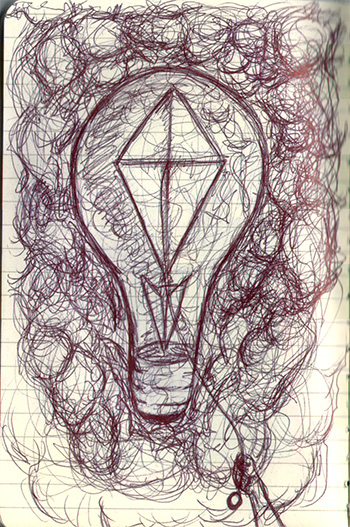
Preconceptions often arise when you say someone is creative. A friend of mine even uses air quotes with that word. He also uses it as a noun, which is common in ad agencies.
“You can do that because you’re a ‘creative’.”
The connotation isn’t completely positive. There is this suggestion that though creative people can be very interesting and fun, they aren’t very relevant or practical. Sometimes they’re just annoying.
As a person who makes a living by being “creative”, I’ve noticed that some exceptionally creative people are better at being relevant, practical and ultimately… useful. Meanwhile others are abrasive, unilateral and consumed with thinking “outside the box.” The biggest difference is whether they treat their ideas as paper airplanes or kites.
Paper Airplanes
At one point or another, you’ve probably made a paper airplane. More than likely, it was a fun diversion from something boring… like school. You could spend quite a bit of time creating elaborate designs, but after a few minutes of tossing it in the air you moved on to something else.
Some creative people are the same way. Their ideas are fun diversions from a boring life. Some of these ideas can be quite elaborate and detailed. Unfortunately, they lack relevance. Tossed into the air, they rarely soar very high and soon come back to earth. You can repeatedly throw, fling or chunk the idea back into the air, but it is quickly grounded again and again.
The other issue is the ideas lack control. Unless you’re in a very open environment, they tend to crash into existing structures and/or people. Some creative people give you very little ability to direct their ideas, so there’s not much you can do to keep them from disrupting systems, irritating people or damaging themselves beyond an ability to fly.
Kites
The biggest difference between a paper airplane and a kite is the tether. Although a kite can sour to great heights, it has a thin piece of twine connecting it to someone on the ground. Even though the person doesn’t have complete control of the kite, they can direct it enough to keep it from hitting trees or power lines.
When creative people treat ideas as kites, they use relevance as their twine. It seems like that would limit their ideas. Ironically, the tension of the pull is what allows the idea to scale higher into the air. The idea still has freedom to move, but is given a gentle pull in a direction. If the kite is pulled too hard in a direction, it loses altitude and may come crashing down. So, there is a delicate balance between the kite and the ‘holder of the twine’ (i.e. bosses, customers, clients, etc.).
How to Turn a Paper Airplane into a Kite
1. Listen
When you feel someone is dissin’ your idea, don’t respond immediately out of self-defense. Listen to their objection or concern and weigh it from their perspective. If it is a valid opinion, it may save your idea – not destroy it.
2. Be willing to think ‘inside the box’
Thinking outside the box is overrated. Case and point. Most creatives loathe the concept of thinking inside the box, but that’s where the real power lies. If your ideas have no parameters, they have little use. Budgets, deadlines and goals cannot be ignored. There are times to stretch them, but ignoring them is a surefire way to ground your idea quickly.
3. Keep the big picture in mind
No matter how great an idea seems, if it doesn’t contribute to the big picture it is pointless. The big picture is like the wind. Kites will grab on to it, while paper airplanes just try to cut through.
If you’re a “creative” think of this next time you feel a client, customer or coworker doesn’t ‘get it.’ Are you treating your ideas like a paper airplane or a kite?
